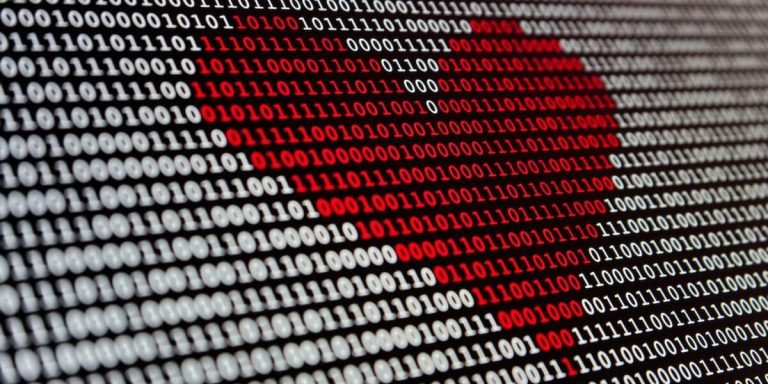Learning Management System Examples: Exploring Real-World Applications in Childhood Education
Technology is transforming how children learn and interact with educational resources. In this digital age, learning management system examples are becoming increasingly important in childhood education, revolutionizing the way knowledge is imparted to young minds. These systems provide a structured platform where information can be shared conveniently and systematically between teachers and students.
The enhancement of traditional teaching methods through technology integration plays a crucial role in improving student engagement levels. Understanding these advancements will help us explore real-world applications more effectively for creating an enriched learning environment for our kids.
Did you know?
Little known fact: The Singaporean Education System employs a holistic learning management system, called “Student Learning Space”, even at the early childhood level to provide experiential and active learning experiences.
The Evolution of Learning Management Systems in Educational Technology
Learning Management Systems (LMS) have evolved significantly within educational technology, showcasing the transformative impact of digital advancements on childhood education. Initially simple software for managing administrative tasks, LMSs have morphed into complex tools that enhance teaching methods with interactive features and multimedia content delivery. Today’s digitized age sees a major shift towards remote learning, with numerous examples illustrating how these systems create engaging and effective pedagogical environments for educators.
Learning management system examples straddle several spheres—from managing curriculums, tracking student performance records to enabling peer interaction—each reflecting their pivotal role in enriching students’ educational journey. For instance, adaptive learning platforms like DreamBox Learning use intelligent algorithms that fine-tune lessons according to individual learner’s strengths and weaknesses—a clear evidence demonstrating personalized attention once thought exclusive only within traditional classroom settings.
Moreover, beyond typical academic pursuits that were primary LMS applications initially conceived for; present instances also shed light on its extensive usage across extra-curricular domains such as coding or music classes embracing technological inclusivity more than ever before—in turn broadening our idea about what truly constitutes effective ‘education’. This paradigm shift borne out by the innovative application of LMS underscores not just our growing reliance but active enthusiasm integrating technology into modern-day education.
Key Features and Benefits of Modern LMS Platforms
As we continue to navigate the digital age, learning management systems (LMS) have become a crucial tool in educational technology. Modern LMS platforms boast an array of features that transform and streamline both teaching and learning processes. Let’s delve into some standout functions of these technologies.
Firstly, one significant advantage is personalized learning paths. Today’s robust Learning Management Systems offer options for personalizing curriculum according to each learner’s pace and understanding level. This feature facilitates individual growth while eliminating unnecessary stress caused by classroom competition or standardization issues.
Secondly, modern LMS platforms equip educators with analytics tools that provide insights on student performance metrics like engagement levels, course progress and areas requiring improvement; vital information when tailoring effective strategies for different students.
Another essential aspect worth mentioning is the collaborative environment within these systems facilitating peer interaction through forums discussions or group projects increasing social interaction thereby enhancing knowledge absorption—learning doesn’t take place in isolation anymore!
Comparing Popular Learning Management System Examples
In the fast-paced world of 2023, there are numerous effective learning management system examples. With these systems playing a pivotal role in reshaping our approach to education and student engagement, it’s imperative for parents and educators alike to understand their functionality.
Beginning with Canvas, this cloud-based Learning Management System (LMS) has become prevalent within many educational institutions worldwide. Its integrative design allows teachers to create an engaging online environment that includes quizzes, discussions boards and grading rubrics. More importantly, its seamless compatibility with various education apps like Google Drive makes it highly user-friendly.
Next on our list is Moodle- a free open-source LMS known for catering extensively towards blended learning environments. This platform offers customizable courses allowing educators the flexibility they need while planning curriculum activities or managing assessments effectively.
Blackboard Learn is another popular example celebrated for its comprehensive suite of features designed specifically around students’ needs – from content creation tools to tracking abilities that facilitate better monitoring of student progress.
Lastly yet importantly we have Edmodo taking a more social network-like approach by providing platforms where parents could join the teacher-student interaction loop as well offering possibility for increased parent involvement thereby enhancing overall experience .
Enhancing Teaching and Learning Through Integrated Technologies
In the current digital age, enhancing teaching and learning through integrated technologies has become a vital necessity. One such example of technology integration in education is Learning Management Systems (LMS). A multitude of LMS examples exists that provide interactive platforms for administering, documenting, tracking, reporting and delivering educational courses or training programs.
LMSs can revolutionize classroom dynamics by offering personalized and adaptive learning strategies tailored to individual student needs. Tools like gamification elements within an LMS elevate engagement levels substantially while also making knowledge retention much more effective. For instance, students might engage with complex subjects via quizzes or compete against peers while developing essential skills – all this seamlessly executed within one system.
Moreover, a well-designed LMS allows for blended virtual classrooms wherein traditional face-to-face instruction coexists harmoniously alongside online learning components – capturing the best aspects from both worlds. With features such as real-time monitoring of performance metrics to track progress at any given point in time ensure educators are informed simultaneously on academic achievement gaps which need urgent attention.
Remember educators everywhere: The goal isn’t just about implementing new technology into the curriculum; it’s integrating tech tools so holistically that they enhance pedagogical excellence without overwhelming teachers or learners alike!
How LMS Tools Facilitate Effective Curriculum Delivery
Learning Management Systems (LMS) have emerged as a powerful tool in modern education, transforming how teachers deliver curriculum and enhancing the overall learning experience. With numerous learning management system examples available across various platforms like Moodle, Canvas, Blackboard, Edmodo etc., these technologies are bringing about significant changes to our classrooms.
One major advantage of integrating LMS tools into teaching is that they provide an organized platform for course material delivery. Teachers can upload all curriculum content such as lectures notes, reading materials and video tutorials onto the platform where students can access them at their own pace. This not only encourages self-guided study but also ensures that no student misses out due to absence or failure to take down accurate notes during class sessions.
These digital tools also promote interactiveness within lessons by providing features like discussion boards which facilitate communication among learners themselves and between instructors and students. Learners get opportunities to discuss study topics thus increasing collaboration while enabling immediate resolution of any arising queries.
Moreover,Learning Management Systems greatly help educators streamline assessment processes . From setting multiple choice questions or essay tasks , collecting submissions digitally,to automatic marking schemes- not only do they save time otherwise spent manually grading assignments but also offer instant feedback which significantly aids learner’s progress tracking procedures.
Assessing Student Engagement and Performance with Analytics
In today’s digital era, harnessing the power of integrated technologies can significantly enhance teaching and learning experiences. A practical tool to consider in this context is a robust Learning Management System (LMS). The integration of LMS into education has unearthed exemplary possibilities for student engagement.
One critical aspect where technology provides substantial support is assessing student performance and level of engagement. Using analytics tools built-in with certain types of LMS can assist educators in gauging students’ real-time involvement during lessons.
For instance, many teachers might find it challenging to check whether all their students are actively participating or just passively attending lectures without any active involvement. Advanced features tied up within various learning management system examples allow monitoring every click or interaction made by the child on an e-learning platform—thereby providing precise data about their activity levels throughout sessions.
Additionally, analytics also aid in evaluating overall academic performance besides offering detailed insights on individual progress across different subjects too. If used appropriately, these useful metrics pave the way for personalized instruction that caters to each learner’s unique needs thereby increasing efficiency and productivity along with higher retentivity rates among learners.
Moreover, making use of such sophisticated technological aids not only enhances pedagogical practices but also ensures maximal benefits for students as well – compelling them towards voluntary participation instead of passive absorption alone; fostering better understanding through interactive mediums; enabling immediate feedback provision which ultimately leads towards improved outcomes both at institutional as well personal levels – contributing positively over long-run scholastic trajectories.
Strategies for Successful Implementation of LMS in Schools
Implementing a Learning Management System (LMS) in schools has gained significant traction over recent years. However, the process doesn’t come without its challenges. For successful integration of this technology into your education system, strategic planning is essential.
The first strategy involves defining educational goals clearly before even selecting an LMS. An effective LMS should align with the school’s learning objectives and methodologies rather than imposing its own structure onto them. It’s pivotal to choose software that not only digitizes education but also enriches it holistically by facilitating personalized learning paths for students.
Secondly, training plays a key role when shifting towards digitalized classrooms through an LMS implementation process in 2023.
Educators need thorough acclimation sessions where they can familiarize themselves with functionalities such as course creation and assignment grading within new platforms like these examples of Learning Management Systems – ‘Moodle’, ‘Blackboard Learn’ or ‘Canvas’. This year comprehension about tech integrations needs upscaling more than ever given our advancing dependence on virtual teaching tools post pandemic era.
Finally, creating engagement around the newly implemented tool can help drive acceptance among all users – teachers, administrative staff and parents alike.
You could demonstrate how streamlined communications are facilitated via notification systems offered by many advanced LMSES . Also educating stakeholders about tracking academic progress becomes so much easier due to automated reporting features most good learning management systems possess today will be beneficial too .
Overcoming Challenges During the Adoption Process
Adapting to new technology can sometimes feel like a Herculean task – more so when it includes integrating something as comprehensive as a Learning Management System (LMS) into schools. However, by identifying potential challenges and planning ahead, the transition process can be made considerably smoother.
One of the foremost issues faced during such adoption processes is resistance from educators who are comfortable with traditional methods of teaching. Training sessions catering specifically to dispel their apprehensions could contribute significantly towards eliminating this hindrance.
Another common hurdle encountered is insufficient technological infrastructure in many institutions. Prioritizing an upgrade here would be essential before incorporating LMS efficiently within classrooms across all grades.
Financial constraints may pose another significant challenge while adopting high-end learning management systems – especially for smaller or less-funded educational establishments. Herein lies one popular solution; open-source platforms which eliminate hefty licensing fees associated with proprietary software while offering robust functionality akin to premium counterparts.
The choice also matters largely on system compatibility that integrates well without causing disruptions, thus underlining the need for thorough research based on specific needs and faculty proficiency levels.
Incorporating learning management system examples becomes easier when champions within institutes help others overcome apprehension by sharing successful experiences which increases buy-in among fellow teachers hence promoting acceptance at grassroots level.
Similarly taking small steps like initiating pilot projects before full-fledged implementation eases everyone involved into using these systems seamlessly over time instead of overwhelming them right off bat might prove beneficial too.
Training Educators to Maximize the Use of New Tech Tools
In the context of harnessing technology for child education, a Learning Management System (LMS) serves as an excellent resource. As this digital platform streamlines administrative tasks and enhances the learning experience, training educators to maximize its use is necessary. The shift toward virtual learning stubbornly remains in 2023; thus understanding LMS through practical examples becomes critical.
To begin with, let’s look at some common features of successful implementations of LMS using “learning management system examples”. Typically these include easy navigation capabilities, interactive modules for diverse learners, and robust assessment tools that track progress effectively.
Training should start with making teachers comfortable navigating around various aspects within the LMS: from creating assignments or quizzes to monitoring student engagement data. Interactive webinars can provide real-time lessons on how to utilize those facilities most efficiently while also allowing room for queries and clarifications.
Another aspect worth emphasizing during educator training sessions includes multifaceted methods available inside popular systems like Moodle or Schoology which supports differentiated teaching styles catering individual learner needs. Educators need hands-on exposure conducting virtual classrooms where they learn about embedding multimedia resources such as videos and podcasts into lesson plans enhancing knowledge retention rates among students significantly compared traditional verbal lectures alone.
Conclusion
So there you have it! Diverse learning management system examples that not only enhance the pedagogical process but also enrich every young learner’s educational journey. These systems can bring a world of interactivity, engagement, and convenience right into your child’s playroom or classroom.
They are more than mere tools; they represent an opportunity to shape their bright futures.
Don’t stop here though, continue exploring our site for even more insights on childhood education and resources designed with parents and educators in mind. Equip yourself with the knowledge needed to navigate this remarkable phase effectively because remember – shaping minds today builds leaders tomorrow!







